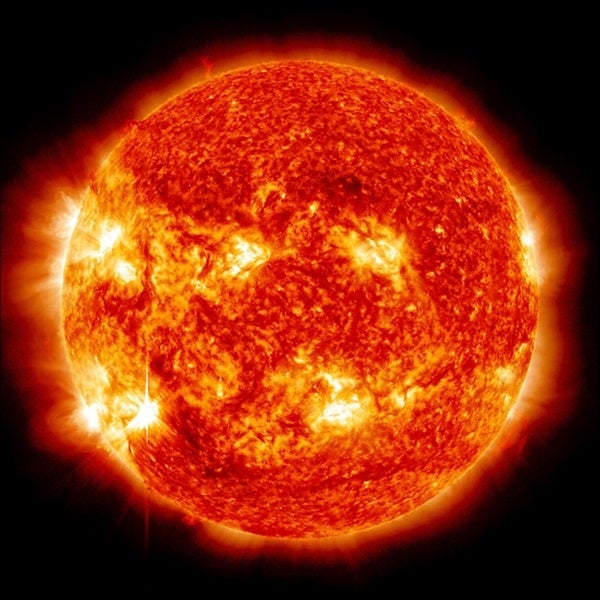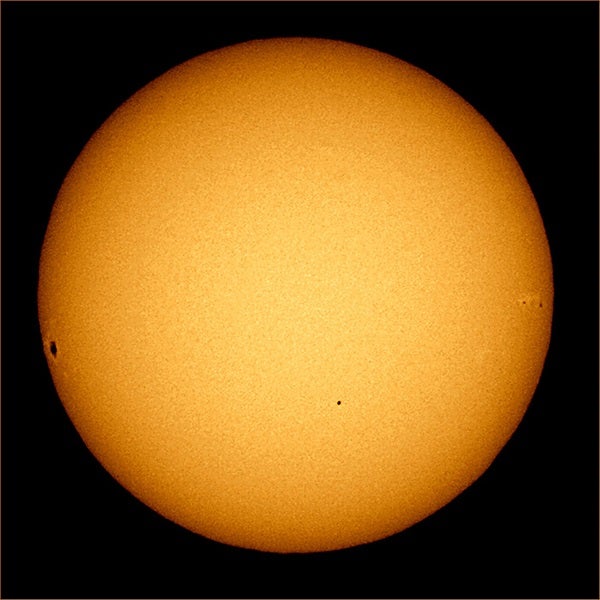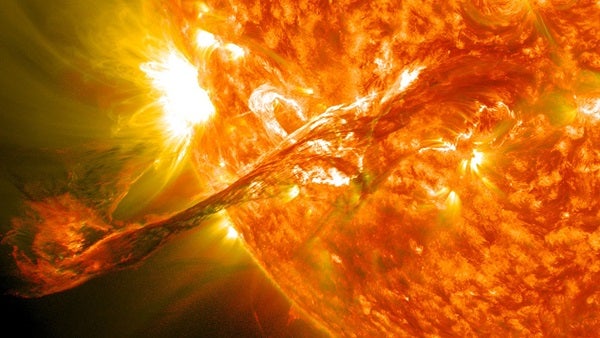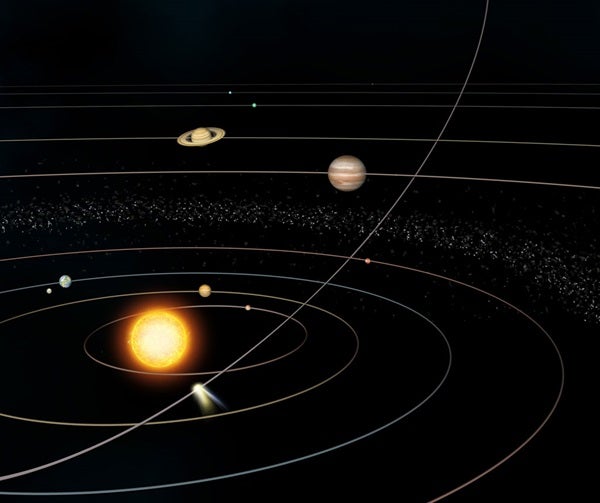
Gazing up at the clear blue sky, our eyes are often drawn to the Sun, that magnificent burning orb that illuminates our days, warms our planet, and supports the growth of our food. But how much do we really know about our closest star?
Astronomers have been studying it for centuries, and in that time, they’ve uncovered countless fascinating details about this fiery giant. So, let’s explore some of the most intriguing features and dive into the impact it has on Earth.
What is the Sun made of?
The Sun is primarily composed of two elements: hydrogen and helium. Hydrogen makes up about 74 percent of its mass, while helium accounts for some 24 percent. The remaining few percent includes heavier elements like oxygen, carbon, neon, and iron. These latter elements were formed in the cores of older, long-dead stars that exploded and spewed their innards outward, providing enriched material that was eventually recycled into the it when it was born.
How hot is the Sun?

The temperature varies depending on which part you’re talking about. The core, where nuclear fusion occurs, is scorching hot, with a temperature of about 27 million degrees Fahrenheit (15 million degrees Celsius). The Sun’s surface, or photosphere, is cooler, at around 10,000 F (5,500 C). Meanwhile, the outer atmosphere, the corona, is curiously hotter than the surface, with temperatures soaring up to a few million degrees.
How old is the Sun?

Our Sun is a middle-aged star, approximately 4.6 billion years old. It formed from the gravitational collapse of a region within a large molecular cloud primarily composed of hydrogen and helium. As the cloud contracted under its own gravity, the pressure and temperature at the core increased, eventually triggering nuclear fusion.
It has been burning ever since, and it’s expected to continue shining about the same way for another 5 billion years or so, at which point it will balloon up into a red giant star.
How big is the Sun?
With a diameter of some 864,000 miles (1.39 million km), the Sun dwarfs any other object in our solar system. In fact, you could fit about 1.3 million Earths inside it.
However, despite its dominance over our solar system, the Sun is still a relatively diminutive star when compared to others in the known universe. For instance, the red hypergiant star UY Scuti has a radius some 1,700 times that of the Sun, meaning some 5 billion Suns could fit inside UY Scuti.
What would happen if it suddenly disappeared?

Without the Sun, Earth would be a vastly different place. We wouldn’t know the Sun had vanished for about eight minutes (the Earth is, on average, about 93 million miles away) due to the time it takes for light (and gravitational waves) to travel from it to Earth. After that, the world would plunge into darkness.
Without the Sun’s heat, Earth would become a frozen, lifeless rock within a week. The average global surface temperature would plummet, the atmosphere would freeze and fall to the ground as snow, and the oceans would freeze over. And without the Sun acting as the gravitational anchor point of the solar system, Earth would cease to orbit anything, instead moving along a straight line (depending on interactions with other planets) right out of our solar system.
What happens during a solar eclipse?

A solar eclipse occurs when the Moon moves between Earth and the Sun, casting the Moon’s small shadow on Earth. There are three types of solar eclipses: partial, annular, and total.
During a total solar eclipse, the Moon completely covers the Sun, casting a dark inner shadow, called a penumbra, that briefly turns day into night. On average, about 2.4 solar eclipses (of all types) occur somewhere on Earth each year. Total solar eclipses, however, are relatively rare, occurring somewhere on Earth only about once every 18 months, on average.
Fortunately, on April 8, 2024, a total solar eclipse will be visible across a narrow path that starts in Mexico and stretches from Texas to Maine and into eastern Canada. So prepare now, you don’t want to miss it!
How far away is it?
It depends on Earth’s average distance to the Sun is about 93 million miles (150 million kilometers) from the Sun.
How and when will it die?
In about 5 billion years, it will exhaust its hydrogen fuel and enter the red giant phase of its life. Its outer layers will expand, swallowing the inner planets, possibly including Earth. Eventually, the Sun will entirely shed its outer layers, leaving behind a hot core that will slowly cool and shrink into a white dwarf. Over billions more years, the white dwarf will continuously lose heat and ultimately fade from view – that is, assuming anyone is even around to watch.
Is it a normal star?
Yes, it is a relatively normal star: It’s known as a G-type main-sequence star, or G dwarf star, which are common throughout the universe. It just so happens that the Sun is the closest star to Earth. Like other stars, the Sun is a massive ball of hot, glowing gas called plasma. And as a main-sequence star, it shines by fusing hydrogen into helium in its core, releasing huge amounts of energy in the process.
One thing that makes our Sun somewhat uncommon is that it’s a single star. Many stars are part of binary systems or even larger groups. In a binary system, two stars orbit around a common center of mass. Such configurations are actually more common in the universe than single stars like the Sun.
The Sun is a dynamic and complex star that plays a critical role in our daily lives. It’s a massive, incredibly hot ball of gas that’s been burning bright for billions of years. And it will continue to burn for billions more. Without the Sun, life as we know it simply wouldn’t exist.
As our knowledge of the Sun and other stars continues to grow, so too will our appreciation for the beauty and bounty they bring to the worlds around. So, the next time you step outside and feel the warmth of the Sun on your skin, take a moment to marvel at the incredible power and mystery of our nearest star.









